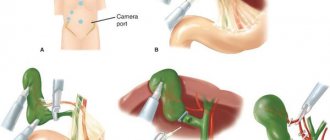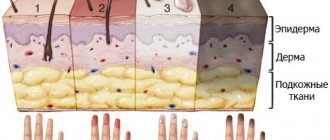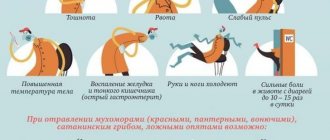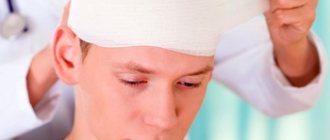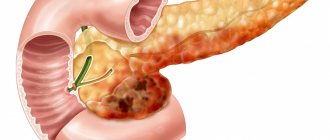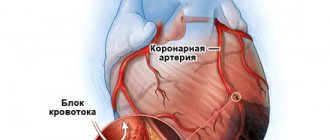What is the essence of sunstroke?
Doctors use this term to describe overheating of the body. “This is a condition that can occur when a person’s body becomes too hot,” comments Andrey Besedin, Ph.D., family doctor at GMS Clinic. - Sunstroke causes damage to the central nervous system. This condition can occur both during exposure to the sun and several hours later.” Our body is able to regulate body temperature quite well: for example, when it increases, sweating is activated.
But sometimes there are glitches in this process. “Heat stroke occurs when compensatory mechanisms cannot cope with heat transfer, and body temperature rises significantly,” says Ivan Golubev, a therapist at the MEDSI Clinical Diagnostic Center in Grokholsky Lane. “Because of this, inflammatory reactions in the body are activated, which can result in failure of various organs and systems. Possible failure of the nervous system, muscles, liver, kidneys, lungs and heart.”
Main symptoms
Signs of heat stroke increase gradually as overheating increases. The skin becomes red and hot; in the first stages of the condition, profuse sweating appears, which is subsequently replaced by dry skin. General weakness, dizziness, double vision and difficulty focusing appear. Breathing becomes more frequent, its rhythm is disrupted, and shortness of breath develops. The pulse quickens and weakens. Nausea and vomiting, convulsions and hyperthermia occur, confusion of consciousness appears, including hallucinations.
The classic form of heatstroke occurs in mild, moderate and severe forms. Their symptoms coincide with those of sunstroke, differing only in the generalization of the process: neurological symptoms are accompanied by more severe disorders of the cardiovascular, respiratory, endocrine and urinary systems.
Other forms of heat stroke are also encountered in clinical practice:
- hyperthermic (pyretic), the main symptom of which is intense heat (39-42°C);
- asphyxial, characterized primarily by respiratory distress;
- dyspeptic (gastroenterological) with severe nausea, vomiting, diarrhea and urinary retention;
- cerebral (paralytic), the main symptom of which is convulsions and disturbances of consciousness caused by oxygen starvation.
Without specialized assistance, the severity of the condition progressively increases. It can result in the development of cerebral and pulmonary edema, disseminated intravascular coagulation syndrome, intracranial hemorrhage, heart and kidney failure.
Causes of sunstroke
As a rule, this condition is caused by prolonged exposure to the open sun in the heat. “Sunstroke can also occur with high physical activity in dry, windless weather,” adds Ivan Golubev. That's why experts don't recommend exercising outside in the heat.
Several factors increase your risk of sunstroke. These, according to Valery Vasiliev, rehabilitation doctor, kinesiotherapist, osteopath, include the following:
- Direct exposure to the sun on an uncovered head;
- Overweight, obesity;
- Clothes that are too tight and tight;
- Staying in poorly ventilated areas;
- Cardiovascular and endocrine diseases;
- Neurological problems;
- State of alcoholic intoxication;
- Smoking.
“Excessive sun exposure is dangerous for everyone. People who are weakened, overtired, suffering from cardiovascular diseases, thyrotoxicosis, and obesity should be especially careful. Children and elderly people overheat easily,” adds Valery Vasiliev.
The risk of overheating is reduced by proper drinking regimen, loose, well-ventilated clothing made from natural fabrics and a hat, and reducing the time spent in the open sun during the heat of the day to a minimum.
How many days do the effects last?
If sunstroke was mild and its consequences were not pronounced, then within a day the victim’s condition will normalize, although general weakness may be present for another 2-3 days. A more severe form of the painful condition requires the provision of qualified medical care, hospitalization of the victim, and in this case the recovery period can last 7 days - 1 month.
If a person falls into a coma, even doctors cannot predict the period of rehabilitation and recovery. It all depends on the general state of health, the age of the victim, and the level of the immune system.
Signs of sunstroke
The first symptoms of sunstroke are fatigue, headache, dizziness, and a feeling of “ache” in the body. “There is also a chance of nausea and vomiting. A little later, tinnitus, shortness of breath, rapid heartbeat, and darkening of the eyes may appear, warns Ivan Golubev. - At this stage it is important to provide assistance! Further overheating leads to rapid damage to the central nervous system (CNS), cyanosis of the face occurs, severe shortness of breath, the pulse becomes frequent and weak. This is accompanied by muscle cramps and hallucinations. Breathing becomes uneven, thoughts are confused, and delirium occurs. The victim may lose consciousness at any moment.”
Other signs of sunstroke should also alert you. “When overheated, patients complain of weakness, “weakness,” drowsiness, headache, thirst, nausea, tachycardia, shortness of breath, body temperature rises to 40-41˚C,” adds Andrey Besedin. — Almost always the patient has psychosomatic problems (loss or confusion, inability to get up, dizziness, etc.). This is a medical emergency that must be treated quickly because it can cause death."
According to doctors, some symptoms of sunstroke can be confused with signs of a stroke, severe allergies to certain medications, acute bacterial infections and thyrotoxic crisis. “All of these conditions, including heat stroke itself, can be extremely dangerous, so you should not make a diagnosis yourself. In this situation, it would be correct to immediately call an ambulance team,” warns Ivan Golubev.
While waiting for paramedics, the victim must be given first aid.
Signs of Heat Stroke
If heat exhaustion cannot be recognized, even more dangerous symptoms appear that characterize heat stroke:
- temperature rise to 39-40 0C or more;
- difficulty breathing;
- severe vomiting;
- ari nervous activity.
This condition can cause serious damage to organs (especially the heart and kidneys). Help must be provided quickly - and it is advisable not to miss thermal exhaustion, in which it is much easier to help a person.
First aid for sunstroke
The main rule here is to quickly move to a cool room and gradually reduce body temperature.
“If you were unable to protect yourself from exposure to the sun or you need to provide first aid to a person with sunstroke, then, of course, it would be best to consult a doctor, and until he arrives, move to a shaded place or a cool room where there is enough oxygen and a normal level of humidity and get rid of outer clothing. You also need to drink cool water, preferably mineral water, or regular water, but with added sugar and salt on the tip of a teaspoon. This will help restore the water-salt balance,” advises Valery Vasiliev. You should also place the patient on his back and begin to gradually cool his body using physical methods. “You can blow on an undressed patient, make a wet wrap, spray water at room temperature on him, apply “cooling” bags to the armpits and groin areas, and neck,” adds Andrey Besedin.
If for some reason it is impossible to undress, remove at least those items of clothing that are squeezing your chest and neck: unbutton your shirt collar, loosen your belt.
All these methods will help reduce body temperature to normal values and restore the functioning of the cardiovascular and respiratory systems.
Sunstroke is dangerous!
Some people dream all year about the scorching sun, leaving stunning bronze marks on the body, enjoying every ray of sunshine. Some people cannot stand the heat and hide in the shadows, surprising others with their pale skin. It doesn’t matter whether it’s about you or not.
It is important that both the former and the latter equally expose themselves to the risk of sunstroke or heatstroke during the hot season. So what is it and how to deal with it?
What is sunstroke?
Sunstroke is an acute painful condition that occurs due to overheating of the head by direct rays of the sun. As a result, the blood vessels of the brain dilate, and there is a strong flow of blood to the head, which can “stagnate” there. In some cases, even ruptures of small blood vessels occur in the brain, which threatens to disrupt the peripheral and central nervous systems of the human body.
If the patient's condition is diagnosed as sunstroke, its symptoms and signs will have characteristics such as fever, lethargy, headache and even convulsions. The reason for such manifestations lies in the structural and functional changes in the subcortical-stem parts of the brain, which regulate blood circulation, breathing, body temperature, level of sleep or wakefulness, etc.
Another definition of “sunstroke” is a type of heat stroke that occurs as a result of significant overheating of the body.
Causes of sunstroke
The main causes of sunstroke are the sun's rays mercilessly scorching the uncovered head, as well as the naked body. Contributors to sunstroke: stuffiness, windless weather, drinking alcohol, overeating. You should absolutely not fall asleep when you are sunbathing; if you are afraid to fall asleep in the sun, ask the people relaxing nearby to wake you up.
Risk factors:
- Direct exposure to the sun on an uncovered head;
- Increased weather humidity;
- The presence of certain health problems, in particular: hypertension, vegetative-vascular dystonia, endocrine disorders, heart disease, obesity;
- Age-related risks: children under 1 year of age, especially newborns, and the elderly. Sunstroke in children and the elderly is most likely and threatening, because in children the natural thermoregulation of the body is not yet sufficiently perfect, and in older people it already functions poorly;
- Overweight, obesity;
- Alcohol intoxication;
- Smoking;
- Stress, nervous tension.
Mild symptoms:
- Headache;
- Nausea;
- General weakness;
- Increased breathing and heart rate;
- Pupil dilation.
Moderate symptoms:
- Severe headaches with nausea and vomiting;
- Sharp adynamia;
- State of stupefaction;
- Unsteady gait;
- Uncertainty of movements;
- At times, a state of fainting;
- Increased breathing and heart rate;
- Bleeding from the nose;
- Body temperature 38-40 °C.
Sunstroke, symptoms of a serious condition.
The severe form develops suddenly. The skin of the face is hyperemic, later pale cyanotic. Possible: changes in consciousness from confusion to coma, tonic and clonic convulsions, delirium, hallucinations, involuntary release of feces and urine, temperature rise to 41-42 °C, sudden death is possible.
With severe sunstroke and the absence of urgent medical care, mortality occurs in 20-30% of cases.
Heatstroke.
Heat stroke is an acute painful condition that occurs when the body overheats. As a result, the processes of heat generation increase while heat transfer in the body decreases or becomes difficult, which disrupts its vital functions.
Anything that, in one way or another, can disrupt the secretion of sweat and make it difficult to evaporate contributes to overheating of the body: humidity and high air temperature, overwork, active physical work in synthetic, leather or rubberized clothing, dehydration, long hikes, walks in hot weather, abundant food.
Heatstroke is much easier to get than sunstroke: for it, the sun is not a prerequisite; it is enough to simply work hard in excessively warm clothes that do not allow air to pass through, or spend several hours in a stuffy room with poor ventilation.
Help with sun and heat stroke.
Actually, help with sunstroke and heatstroke is the same in both cases.
When the first symptoms appear, it is necessary to quickly respond by providing first aid to the victim. Do not forget that this is first aid, and it is better to call an ambulance immediately, since it is usually difficult for a person to navigate and correctly assess the severity of the victim’s condition, especially if sunstroke is in children or the elderly.
General rules of first aid: eliminate the influence of overheating factors - immediately take the victim out into the fresh air, always in the shade, or place him in a cool, well-ventilated room, lay him down with his head raised, unfasten the collar, or better yet, undress him to the waist. Place a cold compress on your head and spray your body with cold water. Give plenty of cool water to drink.
First aid:
- Move or transfer the victim to a shaded place or cool room where there is enough oxygen and a normal level of humidity. It is desirable that the space in the immediate radius be open, without large numbers of people;
- It is imperative that the victim be put down;
- The head and legs must be raised by placing something under the neck and ankles, for example, a bag or a folded towel;
- Free the victim from outer clothing, especially those squeezing the chest and neck, unbutton the collar, bra, remove the trouser belt, it is better to remove clothes made of synthetic or thick fabric completely, at least to the waist;
- Give the patient plenty of water, always cool and preferably mineral water, you can add sugar and salt on the tip of a teaspoon;
- Wet the victim's face with cold water, apply a cold washcloth to the forehead and neck;
- Wet any cloth with cold water and pat your chest, you can pour water over the whole body with water no warmer than 20 °C, or, if the victim is able, take a cool shower - 18-20 °C;
- Apply a cold compress, ice cubes or a cold bottle to the head, under the back of the head and on the forehead;
- Fan the victim with frequent movements;
- If involuntary vomiting begins, be sure to clear the victim’s airways of vomit, do not let him choke, turn him slightly on his side;
- The body can be sprayed with cold water or wrapped in a wet sheet;
- If consciousness becomes cloudy, let the patient smell the vapors of a 10% ammonia solution;
- In case of respiratory distress, lightly moisten a cotton swab in ammonia (found in any car first aid kit) and carefully bring it to his nose several times;
- In emergency cases, if you faint, stop breathing, or cannot feel your pulse, do not wait for doctors! Remember what you were taught at school, and give artificial respiration to the victim and massage the heart until respiratory movements and cardiac activity appear - use the pulse as a guide.
Only the lazy don’t write about the abnormal heat in Russia now. Everyone is publishing folk recipes on how to better survive the heat. But there are several basic principles of “hot life” that it is better not to deviate from.
Prevention measures:
- In sunny, hot weather, protect your head with a light, light, easily ventilated hat (light, better reflects sunlight), and protect your eyes with dark glasses;
- Avoid staying in open areas with direct sunlight. The sun is most active and dangerous during the period: from 12.00 to 16.00 or from 10.00 to 17.00 - in countries close to the Equator;
- Avoid exposure to direct rays of the sun on your uncovered body, and especially your head - cover yourself with an umbrella, alternate swimming and resting on the sand, do not fall asleep in the sun, do not take long excursions in the heat, drink more;
- Do not stay in the sun for a long time, even if you are on the beach under an umbrella. The duration of sunbathing at first should not be longer than 15-20 minutes, later you can gradually increase the time, but no longer than two hours with mandatory breaks in the shade and coolness;
- It is better not to lie down to sunbathe, but to move, take sunbathing in the morning and evening;
- Do not sunbathe immediately after eating; you can go out into the sun only after an hour;
- Wear light, light clothing, easily ventilated, made from natural fabrics (linen, cotton are ideal) that do not prevent sweat from evaporating;
- Don't eat too much during hot weather. Give preference to vegetables and dairy products;
- Maintain water balance in your body. While on vacation, it is better to drink at least 3 liters a day at sea;
- Wipe your face with a wet, cool handkerchief from time to time, wash your face more often and take a cool shower;
- If you feel unwell, seek help immediately or take possible measures yourself.
Heatstroke and sunstroke occur most frequently and rapidly in children and the elderly. Due to their age, their body has physiological characteristics; in fact, it is enough that their body has an imperfect internal thermoregulation system. Teenagers are also at risk due to the hormonal activity of the body. This also includes people who are unaccustomed to heat, those suffering from obesity, endocrine and cardiovascular diseases, and, of course, people who abuse alcohol.
If you belong to one of the risk groups, you especially shouldn’t wait for the heat and sun to hit your health, and in the most literal sense of the word. Preventive measures must be taken in advance. Heat stroke can only be prevented by creating normal living and working conditions where you work and live: normal temperature, ventilation and humidity in the premises, clothing appropriate for the season - all this will help you reduce the risk of sunstroke and heatstroke.
And may the sun be your joy!
Add a comment
JComments
Updated: 07/08/2020 13:48
How to avoid sunstroke?
The simplest thing is to moderate your exposure to the sun in hot weather, but if this is not possible, follow these rules:
- Avoid intense physical activity outdoors on hot sunny days between 11:00 and 17:00, or stay in the shade of trees.
- Choose the right clothes - light, loose, made of cotton fabrics; Be sure to wear a hat.
- Keep an eye on your water balance. “Maintain a water regime at the rate of 30 ml of liquid per 1 kg of your own weight,” recommends Valery Vasiliev.
“The loss of fluid should be restored gradually, using for this purpose chilled mineral water, weakly brewed green tea, and natural diluted juices. It is also worth limiting the consumption of fatty and protein foods,” adds Andrey Besedin.
- Do not drink alcohol or other psychotropic drugs that affect thermoregulation processes. “And finally, remember that a healthy body is less susceptible to external factors. Therefore, your daily routine, diet (in particular drinking regimen) and regular physical activity should be your faithful companions on an ongoing basis. Consider all these recommendations, follow safety measures in the sun, and then sunstroke will bypass you,” sums up Valery Vasiliev.
